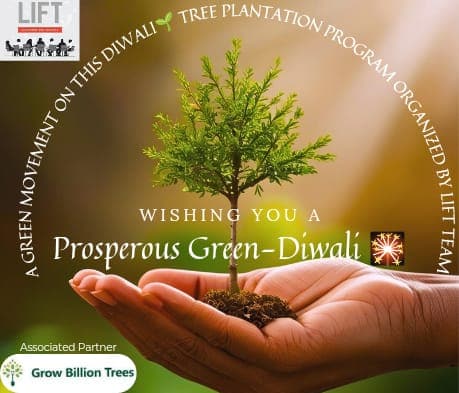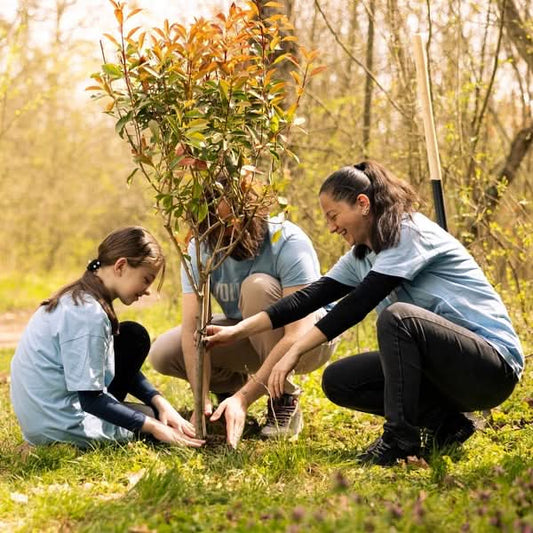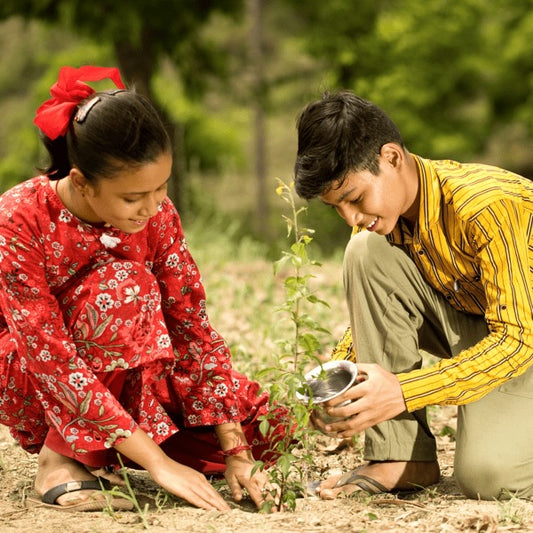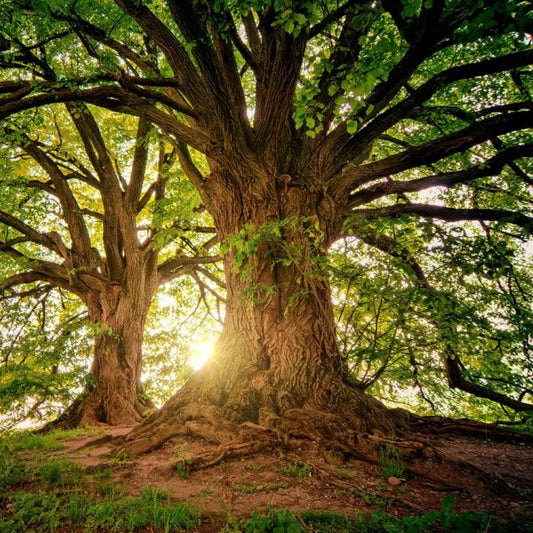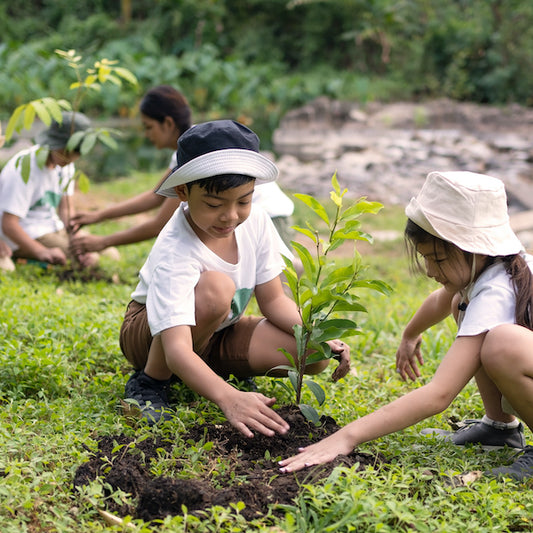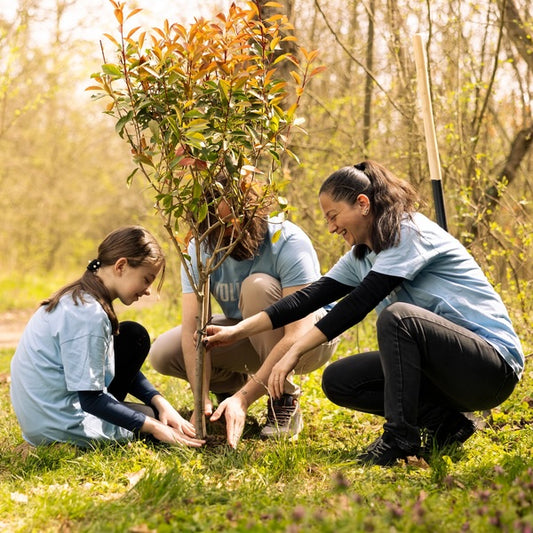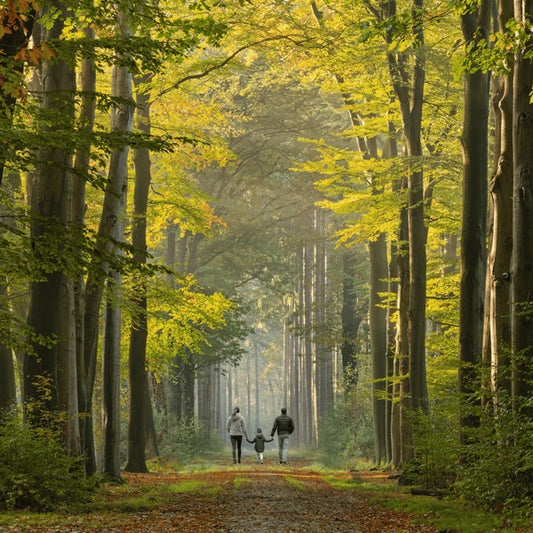Ayodhya Green Haven: Community Green Cover by Grow Billion Trees
Grow Billion Trees, a company dedicated to environmental conservation and sustainable urban development has launched a community forest project in Ayo Read more
Plantation Site Gallery
Project Update 1
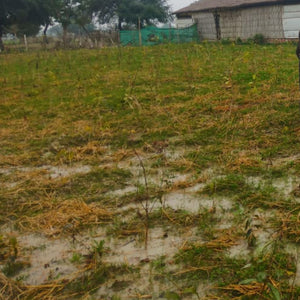
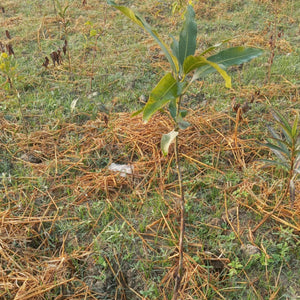
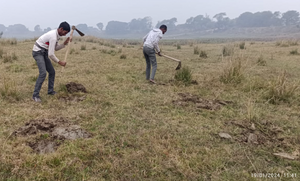
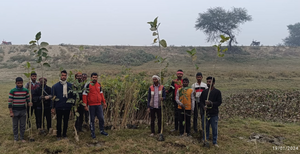
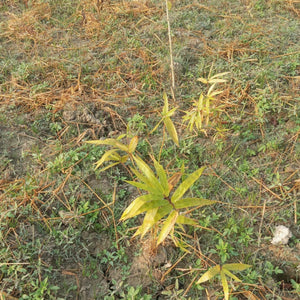
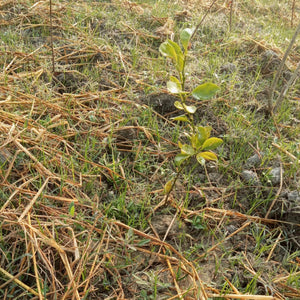
Digital Forest
Forest with 5,940 Trees planted
Want to plant Trees for Shree Ram in Ayodhya Ji now?
Plant a Tree @ 501Ayodhya Green Haven: Community Green Cover by Grow Billion Trees
Grow Billion Trees, a company dedicated to environmental conservation and sustainable urban development has launched a community forest project in Ayodhya, transforming underutilized spaces into thriving green ecosystems. By densely planting native tree species, this initiative enhances biodiversity, improves air quality, and creates a habitat for local wildlife, fostering a healthier and more sustainable environment. The community forest not only combats pollution and regulates temperatures but also strengthens ecological balance, contributing to long-term environmental resilience.
Supported by corporate sponsors and individual donors, Grow Billion Trees empowers local communities in Ayodhya to establish and nurture these forests, enriching both the environment and their livelihoods. This initiative plays a crucial role in reforestation, biodiversity conservation, and climate change mitigation by enhancing carbon sequestration. Through this collaborative effort, Grow Billion Trees is making a lasting impact on both the land and the people of Ayodhya, paving the way for a greener, more sustainable future.
Tree Plantation Date
Project Commencement: 12th January, 2024
Plantation Location
R53M+24X Manjha Kala, Uttar Pradesh - 224123
Forest Type: Community Forest
Grow Billion Trees has initiated a community forest initiative in Ayodhya, focused on restoring green spaces and fostering ecological balance through dense tree plantations. This initiative emphasizes the plantation of native tree species, creating a thriving ecosystem that enhances biodiversity, improves air quality, and provides a habitat for local wildlife. By integrating trees with shared landscapes, the community forest serves as a natural carbon sink, helping to mitigate climate change and regulate temperatures. Additionally, it strengthens soil health, enhances water retention, and contributes to sustainable land use. This project reflects Grow Billion Trees' commitment to environmental conservation and fostering greener, more resilient communities in Ayodhya.
Advantages Of Community Forest
Enhances Biodiversity and Ecological Balance
A community forest plays a crucial role in restoring and maintaining biodiversity by providing a habitat for a wide range of flora and fauna. Native tree species attract pollinators such as bees and butterflies, while also offering shelter and nesting grounds for birds and small mammals. This balanced ecosystem ensures the survival of various species, contributing to the overall health of the environment. Additionally, increased plant diversity strengthens the food chain, allowing different organisms to thrive together sustainably.
Improves Air Quality and Reduces Pollution
Trees act as nature’s air purifiers by absorbing harmful gases such as carbon dioxide, sulfur dioxide, and nitrogen oxides while releasing oxygen. They trap dust and particulate matter, reducing air pollution levels in surrounding areas. With urbanization and industrial activities increasing pollution, community forests serve as green lungs that improve air quality, benefiting not just humans but also animals and other living organisms in the region. Cleaner air leads to better respiratory health, reducing cases of asthma and other pollution-related diseases.
Regulates Local Climate and Reduces Urban Heat
The presence of dense tree cover in a community forest significantly helps in moderating local temperatures. Trees provide shade, reducing the amount of direct sunlight that heats up concrete surfaces, thus minimizing the urban heat island effect. Additionally, through the process of transpiration, trees release moisture into the air, further cooling down the surrounding environment. This natural climate regulation makes urban and semi-urban areas more livable, especially during extreme summer months.
Acts as a Natural Carbon Sink and Combats Climate Change
Climate change is a growing concern, and one of the most effective ways to combat it is through afforestation and reforestation efforts. Community forests act as powerful carbon sinks by absorbing and storing large amounts of carbon dioxide from the atmosphere. This process helps slow down global warming and reduces greenhouse gas emissions, contributing to long-term climate stability. Additionally, increased tree cover mitigates the adverse effects of industrial pollution and vehicular emissions, creating a cleaner and healthier ecosystem.
Strengthens Soil Health and Enhances Water Retention
The root systems of trees in a community forest help bind soil together, preventing erosion and land degradation. This is particularly important in areas prone to heavy rains, as tree roots stabilize the ground, reducing the risk of landslides and soil runoff. Additionally, tree canopies slow down raindrops, allowing water to be absorbed gradually into the soil rather than running off quickly. This improves groundwater recharge, ensuring a sustainable water supply for agriculture and local communities. Moreover, trees contribute organic matter to the soil, enriching it with essential nutrients and supporting healthier plant growth.
Provides Livelihood Opportunities and Sustainable Resources
Community forests offer economic benefits by providing sustainable resources such as timber, fruits, nuts, medicinal plants, and fodder. These forests can serve as a source of income for local communities, empowering them with opportunities for eco-friendly businesses. Additionally, they support community forests practices, where trees and crops are grown together, enhancing farm productivity while ensuring environmental sustainability. By offering economic incentives, community forests encourage locals to actively participate in conservation efforts, ensuring the long-term success of these initiatives.
Promotes Mental and Physical Well-Being
Spending time in green spaces has been proven to reduce stress, anxiety, and depression. Community forests provide a serene environment where individuals can relax, meditate, and reconnect with nature. The presence of lush greenery promotes a sense of peace and tranquility, improving mental well-being. Additionally, community forests encourage physical activities such as walking, jogging, and yoga, contributing to better overall health. Studies have shown that people living near green spaces experience lower stress levels and improved cognitive function, reinforcing the need for such initiatives in urban and semi-urban settings.
Mitigates Natural Disasters and Strengthens Disaster Resilience
Community forests act as natural barriers against environmental disasters such as floods, droughts, and landslides. Trees absorb excess rainwater, reducing the risk of flooding in low-lying areas. Their ability to retain moisture in the soil helps prevent drought conditions, ensuring that local water sources remain replenished. Additionally, well-established forests reduce wind speeds, protecting communities from the destructive impacts of storms and cyclones. By investing in community forests, regions become more resilient to the effects of extreme weather events caused by climate change.
Fosters Community Engagement and Environmental Awareness
One of the key benefits of community forests is their ability to bring people together for a common cause of environmental conservation. These projects encourage local participation, allowing individuals to take an active role in protecting and maintaining their natural surroundings. Educational programs and awareness campaigns can be integrated into these initiatives, teaching communities about the importance of sustainable living, tree planting, and conservation practices. By instilling a sense of responsibility and ownership, community forests create environmentally conscious citizens who are committed to long-term ecological preservation.
Enhances Aesthetic Appeal and Provides Recreational Spaces
Community forests contribute to the beautification of an area by transforming barren or underutilized land into vibrant green spaces. These forests add to the scenic beauty of towns and cities, making them more attractive places to live and work. Beyond aesthetics, they provide recreational spaces for outdoor activities such as picnicking, birdwatching, and cycling. Such spaces encourage social interaction and cultural gatherings, enhancing the overall quality of life for nearby communities. By integrating green spaces into urban planning, community forests help create sustainable, livable cities.
Commitment by Grow Billion Trees
Grow Billion Trees is committed to driving sustainable plantation efforts, ensuring every initiative aligns with key environmental objectives and promotes long-term ecological balance. We focus on selecting native tree species that are well-adapted to local ecosystems, ensuring a higher survival rate and stronger environmental impact.
To maintain plant health and longevity, Grow Billion Trees emphasizes continuous maintenance and regular monitoring of the plantations. This approach helps ensure that each tree thrives, contributing effectively to both biodiversity and climate resilience.
Transparency is a core principle in our operations. Clients receive comprehensive reports, including geo-tagging of planted trees, survival rate updates, and ongoing progress reports. This level of openness allows clients to track the direct impact of their contributions, reinforcing trust and accountability.
Through our dedication to sustainable practices, Grow Billion Trees ensures that every plantation project leaves a lasting positive footprint on both the environment and the local communities it serves.
Summary
The Community Forest Project at Ayodhya, by Grow Billion Trees is a transformative initiative aimed at revitalizing landscapes through dense, multi-layered tree plantations. By integrating native tree species, the project enhances biodiversity, improves air quality, and helps regulate local temperatures. Acting as a natural carbon sink, the community forest absorbs pollutants, mitigates climate change, and promotes ecological balance. Additionally, it improves soil health, enhances water retention, and provides a thriving habitat for local wildlife. Beyond its environmental impact, the initiative contributes to the aesthetic and functional enhancement of Ayodhya, fostering a greener, more sustainable, and climate-resilient community.
Trees for Corporates
Trending
Most Popular
1. Community Forest Restoration
Reviving Nature, One Tree at a Time!
When concrete jungles take over, community forests stand as nature’s last stronghold! Community forest restoration is the process of reviving degraded land with dense, diverse plantations, bringing biodiversity back to life. At Ayodhya, Grow Billion Trees is leading this green revolution, turning barren spaces into lush, thriving forests. These forests act as nature’s air purifiers, soaking up carbon, cooling the surroundings, and offering a safe haven for wildlife. Plus, they don’t just help the planet—they empower local communities by creating green jobs, improving soil health, and ensuring a greener tomorrow. A tree today, a forest tomorrow!
When concrete jungles take over, community forests stand as nature’s last stronghold! Community forest restoration is the process of reviving degraded land with dense, diverse plantations, bringing biodiversity back to life. At Ayodhya, Grow Billion Trees is leading this green revolution, turning barren spaces into lush, thriving forests. These forests act as nature’s air purifiers, soaking up carbon, cooling the surroundings, and offering a safe haven for wildlife. Plus, they don’t just help the planet—they empower local communities by creating green jobs, improving soil health, and ensuring a greener tomorrow. A tree today, a forest tomorrow!
2. Native Tree Plantation in Community Forests
Plant Local, Grow Global!
In the world of tree plantations, native species are the VIPs. Why? Because they belong! Unlike exotic species that disrupt ecosystems, native trees thrive in their home soil, supporting local wildlife and enhancing biodiversity. Grow Billion Trees ensures that Ayodhya is planted with indigenous trees that naturally improve air quality, regulate water cycles, and provide food and shelter for birds and animals. Think of it as Mother Nature’s original design—restored! So, when you plant native, you don’t just grow trees; you grow an entire ecosystem that flourishes effortlessly.
In the world of tree plantations, native species are the VIPs. Why? Because they belong! Unlike exotic species that disrupt ecosystems, native trees thrive in their home soil, supporting local wildlife and enhancing biodiversity. Grow Billion Trees ensures that Ayodhya is planted with indigenous trees that naturally improve air quality, regulate water cycles, and provide food and shelter for birds and animals. Think of it as Mother Nature’s original design—restored! So, when you plant native, you don’t just grow trees; you grow an entire ecosystem that flourishes effortlessly.
3. Carbon Sequestration through Community Forests
Suck Up That Carbon!
What if we told you that forests are nature’s vacuum cleaners? Community forests act as carbon sinks, absorbing excess carbon dioxide from the air and storing it in tree trunks, branches, and soil. At Ayodhya, Grow Billion Trees is creating a living, breathing wall of green that fights climate change every single day. These trees don’t just take in carbon; they pump out life-giving oxygen while reducing air pollution. So, while industries pump out emissions, forests are working overtime to clean up the mess. It’s time to plant more trees—because the best air purifiers don’t come with a price tag!
What if we told you that forests are nature’s vacuum cleaners? Community forests act as carbon sinks, absorbing excess carbon dioxide from the air and storing it in tree trunks, branches, and soil. At Ayodhya, Grow Billion Trees is creating a living, breathing wall of green that fights climate change every single day. These trees don’t just take in carbon; they pump out life-giving oxygen while reducing air pollution. So, while industries pump out emissions, forests are working overtime to clean up the mess. It’s time to plant more trees—because the best air purifiers don’t come with a price tag!
4. Soil Conservation and Community Forests
Stop Erosion, Start Plantation!
When topsoil erodes, it takes fertility, nutrients, and sustainability with it. Community forests play a crucial role in soil conservation by binding the earth with deep-rooted trees, reducing runoff, and preventing desertification. At Ayodhya, the tree plantations by Grow Billion Trees are stabilizing the land, improving soil moisture, and even making barren land fertile again. Imagine trees as nature’s bodyguards—standing strong, holding the ground, and ensuring that every drop of rain nourishes, not washes away. Let’s root for soil health, quite literally!
When topsoil erodes, it takes fertility, nutrients, and sustainability with it. Community forests play a crucial role in soil conservation by binding the earth with deep-rooted trees, reducing runoff, and preventing desertification. At Ayodhya, the tree plantations by Grow Billion Trees are stabilizing the land, improving soil moisture, and even making barren land fertile again. Imagine trees as nature’s bodyguards—standing strong, holding the ground, and ensuring that every drop of rain nourishes, not washes away. Let’s root for soil health, quite literally!
5. Wildlife Habitat Creation in Community Forests
Bringing Back the Wild!
Every tree planted is a new home for birds, insects, and small mammals. Community forests don’t just benefit humans; they are wildlife havens, restoring lost habitats and bringing back balance to nature. At Ayodhya, Grow Billion Trees is turning deforested areas into sanctuaries buzzing with life. From pollinators like bees and butterflies to nesting birds and small mammals, these green spaces become a lifeline for biodiversity. Forests aren’t just about trees; they’re about everything that calls them home!
Every tree planted is a new home for birds, insects, and small mammals. Community forests don’t just benefit humans; they are wildlife havens, restoring lost habitats and bringing back balance to nature. At Ayodhya, Grow Billion Trees is turning deforested areas into sanctuaries buzzing with life. From pollinators like bees and butterflies to nesting birds and small mammals, these green spaces become a lifeline for biodiversity. Forests aren’t just about trees; they’re about everything that calls them home!
6. Temperature Regulation in Urban Landscapes
Cooling Down the Heat!
Urban areas are heat islands, absorbing and trapping heat due to excessive concrete and fewer trees. Enter community forests—nature’s air conditioners! At Ayodhya, the Grow Billion Trees initiative is creating a natural cooling system with dense tree cover, reducing local temperatures, cutting down air conditioning needs, and making outdoor spaces more livable. Trees provide shade, release moisture, and create a refreshing environment, making cities and towns cooler, fresher, and more breathable. So, next time you feel the heat, thank a tree—or better yet, plant one!
Urban areas are heat islands, absorbing and trapping heat due to excessive concrete and fewer trees. Enter community forests—nature’s air conditioners! At Ayodhya, the Grow Billion Trees initiative is creating a natural cooling system with dense tree cover, reducing local temperatures, cutting down air conditioning needs, and making outdoor spaces more livable. Trees provide shade, release moisture, and create a refreshing environment, making cities and towns cooler, fresher, and more breathable. So, next time you feel the heat, thank a tree—or better yet, plant one!
7. Water Retention and Groundwater Recharge
Trees, the Unsung Water Warriors!
Did you know forests act like sponges? Their roots absorb rainwater, preventing floods, reducing runoff, and allowing water to seep into the ground, recharging groundwater reserves. Grow Billion Trees’ project at Ayodhya, is turning dry lands into water-preserving green zones, ensuring a steady supply of fresh water for the region. More trees mean healthier water cycles, more greenery, and a sustainable future for both people and nature. So, while pipes and pumps deliver water, forests ensure there’s always enough to go around!
Did you know forests act like sponges? Their roots absorb rainwater, preventing floods, reducing runoff, and allowing water to seep into the ground, recharging groundwater reserves. Grow Billion Trees’ project at Ayodhya, is turning dry lands into water-preserving green zones, ensuring a steady supply of fresh water for the region. More trees mean healthier water cycles, more greenery, and a sustainable future for both people and nature. So, while pipes and pumps deliver water, forests ensure there’s always enough to go around!
8. Community Participation in Forest Development
Greener Together!
What’s better than a forest? A community-planted forest! When local people join hands to plant trees, it fosters ownership, awareness, and long-term care for green spaces. Grow Billion Trees ensures that the Ayodhya, initiative involves local communities, schools, and businesses, making reforestation a collective movement. These forests aren’t just government projects or corporate CSR plans—they’re everyone’s responsibility. The more hands in the soil, the greener the future. So, let’s dig in, plant trees, and watch the forest—and the community—grow!
What’s better than a forest? A community-planted forest! When local people join hands to plant trees, it fosters ownership, awareness, and long-term care for green spaces. Grow Billion Trees ensures that the Ayodhya, initiative involves local communities, schools, and businesses, making reforestation a collective movement. These forests aren’t just government projects or corporate CSR plans—they’re everyone’s responsibility. The more hands in the soil, the greener the future. So, let’s dig in, plant trees, and watch the forest—and the community—grow!
FAQ
What is the importance of tree plantation in India?
What is the importance of tree plantation in India
Tree plantation is crucial for India as it combats deforestation, improves air quality, and mitigates climate change. Trees absorb carbon dioxide, release oxygen, and provide habitat for wildlife. They also prevent soil erosion, enhance groundwater recharge, and reduce urban heat. At Grow Billion Trees, we focus on large-scale afforestation projects, like Ayodhya, to restore ecosystems and create greener spaces. By planting native trees, we ensure long-term environmental sustainability and community benefits. Every tree planted contributes to a healthier planet, making cities more livable and rural areas more resilient to climate change.?
Tree plantation is crucial for India as it combats deforestation, improves air quality, and mitigates climate change. Trees absorb carbon dioxide, release oxygen, and provide habitat for wildlife. They also prevent soil erosion, enhance groundwater recharge, and reduce urban heat. At Grow Billion Trees, we focus on large-scale afforestation projects, like Ayodhya, to restore ecosystems and create greener spaces. By planting native trees, we ensure long-term environmental sustainability and community benefits. Every tree planted contributes to a healthier planet, making cities more livable and rural areas more resilient to climate change.
How does Grow Billion Trees contribute to reforestation?
How does Grow Billion Trees contribute to reforestation
Grow Billion Trees is committed to large-scale tree plantation initiatives, transforming degraded lands into thriving green ecosystems. Through our Community Forest projects, such as Ayodhya, we plant native tree species that enhance biodiversity, restore soil health, and support wildlife. Our initiatives focus on engaging local communities, ensuring long-term tree care, and creating sustainable green spaces. By collaborating with businesses, NGOs, and individuals, we make reforestation accessible and impactful. Each plantation drive contributes to carbon sequestration, helping combat climate change while fostering a greener and more sustainable future.?
Grow Billion Trees is committed to large-scale tree plantation initiatives, transforming degraded lands into thriving green ecosystems. Through our Community Forest projects, such as Ayodhya, we plant native tree species that enhance biodiversity, restore soil health, and support wildlife. Our initiatives focus on engaging local communities, ensuring long-term tree care, and creating sustainable green spaces. By collaborating with businesses, NGOs, and individuals, we make reforestation accessible and impactful. Each plantation drive contributes to carbon sequestration, helping combat climate change while fostering a greener and more sustainable future.
What is a Community Forest, and why is it important?
What is a Community Forest, and why is it important
A Community Forest is a green space developed and maintained by local communities for ecological and social benefits. It serves as a natural carbon sink, improves air quality, and provides wildlife habitat. At Grow Billion Trees, we establish community forests like Ayodhya, to create sustainable ecosystems. These forests also enhance groundwater recharge, regulate local temperatures, and offer recreational spaces. Unlike traditional plantations, community forests thrive with local participation, ensuring long-term care and preservation. They play a crucial role in tackling climate change, fostering biodiversity, and improving the overall quality of life.?
A Community Forest is a green space developed and maintained by local communities for ecological and social benefits. It serves as a natural carbon sink, improves air quality, and provides wildlife habitat. At Grow Billion Trees, we establish community forests like Ayodhya, to create sustainable ecosystems. These forests also enhance groundwater recharge, regulate local temperatures, and offer recreational spaces. Unlike traditional plantations, community forests thrive with local participation, ensuring long-term care and preservation. They play a crucial role in tackling climate change, fostering biodiversity, and improving the overall quality of life.
What types of trees are planted in community forests?
What types of trees are planted in community forests
In community forests, we prioritize native tree species that adapt well to the local climate, support biodiversity, and restore natural ecosystems. At Ayodhya, Grow Billion Trees plants indigenous species like neem, peepal, banyan, and fruit-bearing trees to enrich biodiversity. These trees provide food and shelter for wildlife, prevent soil erosion, and improve air quality. Unlike exotic species, native trees require less maintenance, promote ecological balance, and enhance sustainability. By carefully selecting tree species, we ensure long-term environmental benefits and a thriving, self-sustaining forest.?
In community forests, we prioritize native tree species that adapt well to the local climate, support biodiversity, and restore natural ecosystems. At Ayodhya, Grow Billion Trees plants indigenous species like neem, peepal, banyan, and fruit-bearing trees to enrich biodiversity. These trees provide food and shelter for wildlife, prevent soil erosion, and improve air quality. Unlike exotic species, native trees require less maintenance, promote ecological balance, and enhance sustainability. By carefully selecting tree species, we ensure long-term environmental benefits and a thriving, self-sustaining forest.
How do community forests help in climate change mitigation?
How do community forests help in climate change mitigation
Community forests act as natural carbon sinks, absorbing excess carbon dioxide and reducing greenhouse gas emissions. Trees planted in initiatives Ayodhya, by Grow Billion Trees help lower temperatures, filter pollutants, and release oxygen, improving air quality. They also prevent soil erosion, enhance water retention, and support biodiversity. By engaging communities in tree plantation and maintenance, these forests ensure sustainable environmental benefits. Climate change mitigation is not just about reducing emissions—it’s about restoring balance to nature, and community forests are a powerful tool in this fight.?
Community forests act as natural carbon sinks, absorbing excess carbon dioxide and reducing greenhouse gas emissions. Trees planted in initiatives Ayodhya, by Grow Billion Trees help lower temperatures, filter pollutants, and release oxygen, improving air quality. They also prevent soil erosion, enhance water retention, and support biodiversity. By engaging communities in tree plantation and maintenance, these forests ensure sustainable environmental benefits. Climate change mitigation is not just about reducing emissions—it’s about restoring balance to nature, and community forests are a powerful tool in this fight.
How does tree plantation improve local biodiversity?
How does tree plantation improve local biodiversity
Tree plantation fosters biodiversity by providing habitat and food for various species of birds, insects, and small mammals. At Ayodhya, Grow Billion Trees plants a diverse range of native trees that support pollinators, nesting birds, and ground-dwelling creatures. This helps restore the natural ecosystem, promoting a self-sustaining environment. Increased tree cover also improves soil quality, enhances microbial activity, and supports plant diversity. By planting trees, we create thriving green spaces that nurture life, ensuring that both flora and fauna flourish in harmony.?
Tree plantation fosters biodiversity by providing habitat and food for various species of birds, insects, and small mammals. At Ayodhya, Grow Billion Trees plants a diverse range of native trees that support pollinators, nesting birds, and ground-dwelling creatures. This helps restore the natural ecosystem, promoting a self-sustaining environment. Increased tree cover also improves soil quality, enhances microbial activity, and supports plant diversity. By planting trees, we create thriving green spaces that nurture life, ensuring that both flora and fauna flourish in harmony.
How can individuals and companies participate in Grow Billion Trees’ initiatives?
How can individuals and companies participate in Grow Billion Trees’ initiatives
Anyone can contribute to Grow Billion Trees’ mission by sponsoring tree plantations, volunteering for plantation drives, or raising awareness about reforestation. Businesses can support our Community Forest projects through CSR initiatives, funding afforestation efforts like Ayodhya. Individuals can plant trees, adopt a sapling, or even gift a tree for special occasions. Every contribution helps restore forests, fight climate change, and create a sustainable future. Together, we can plant a greener tomorrow, one tree at a time!?
Anyone can contribute to Grow Billion Trees’ mission by sponsoring tree plantations, volunteering for plantation drives, or raising awareness about reforestation. Businesses can support our Community Forest projects through CSR initiatives, funding afforestation efforts like Ayodhya. Individuals can plant trees, adopt a sapling, or even gift a tree for special occasions. Every contribution helps restore forests, fight climate change, and create a sustainable future. Together, we can plant a greener tomorrow, one tree at a time!
What are the long-term benefits of planting trees in urban areas?
What are the long-term benefits of planting trees in urban areas
Urban tree plantations provide shade, reduce air pollution, lower temperatures, and improve mental well-being. At Grow Billion Trees, we develop urban and community forests like Ayodhya, to transform concrete-dominated spaces into green lungs. Trees absorb harmful pollutants, increase oxygen levels, and prevent urban flooding by enhancing groundwater recharge. They also add aesthetic value, promote biodiversity, and create healthier living environments. Investing in urban tree plantations today ensures cooler, greener, and more sustainable cities for future generations.?
Urban tree plantations provide shade, reduce air pollution, lower temperatures, and improve mental well-being. At Grow Billion Trees, we develop urban and community forests like Ayodhya, to transform concrete-dominated spaces into green lungs. Trees absorb harmful pollutants, increase oxygen levels, and prevent urban flooding by enhancing groundwater recharge. They also add aesthetic value, promote biodiversity, and create healthier living environments. Investing in urban tree plantations today ensures cooler, greener, and more sustainable cities for future generations.
How does tree plantation support sustainable water management?
How does tree plantation support sustainable water management
Trees play a crucial role in water conservation by reducing runoff, preventing soil erosion, and enhancing groundwater recharge. The deep roots of trees planted in Ayodhya, by Grow Billion Trees absorb rainwater, ensuring it percolates into the ground rather than being lost as runoff. This replenishes underground water tables, making water available for longer periods. Additionally, forests act as natural sponges, retaining moisture and regulating water cycles. Sustainable tree plantation is key to preserving water resources and preventing water scarcity.?
Trees play a crucial role in water conservation by reducing runoff, preventing soil erosion, and enhancing groundwater recharge. The deep roots of trees planted in Ayodhya, by Grow Billion Trees absorb rainwater, ensuring it percolates into the ground rather than being lost as runoff. This replenishes underground water tables, making water available for longer periods. Additionally, forests act as natural sponges, retaining moisture and regulating water cycles. Sustainable tree plantation is key to preserving water resources and preventing water scarcity.
Why should businesses invest in community forest initiatives?
Why should businesses invest in community forest initiatives
Businesses can make a significant environmental impact by supporting community forest projects through CSR initiatives. Partnering with Grow Billion Trees to develop green spaces like Ayodhya, allows companies to offset their carbon footprint, contribute to sustainability goals, and enhance brand reputation. Green initiatives also foster employee engagement, improve workplace morale, and showcase corporate responsibility. Investing in tree plantations isn’t just about environmental conservation—it’s about building a future where businesses and nature thrive together.?
Businesses can make a significant environmental impact by supporting community forest projects through CSR initiatives. Partnering with Grow Billion Trees to develop green spaces like Ayodhya, allows companies to offset their carbon footprint, contribute to sustainability goals, and enhance brand reputation. Green initiatives also foster employee engagement, improve workplace morale, and showcase corporate responsibility. Investing in tree plantations isn’t just about environmental conservation—it’s about building a future where businesses and nature thrive together.
- Choosing a selection results in a full page refresh.
- Opens in a new window.


